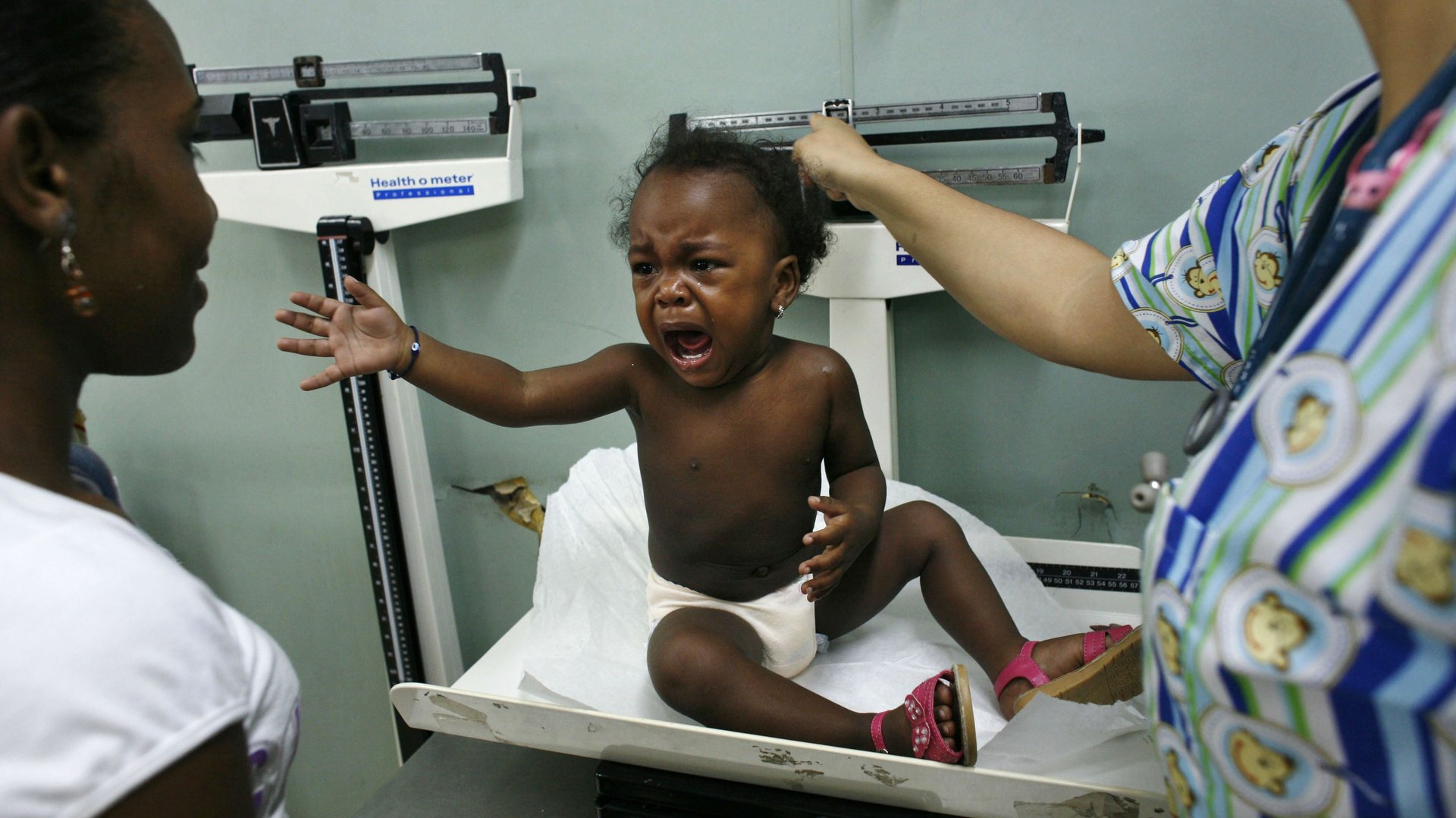This simple thermometer could be a powerful weapon against disease outbreaks
Why is it that in 2016, it’s still so difficult to accurately predict a flu outbreak, or quickly determine its size once it’s already here? It’s a troubling question, considering that influenza epidemics kill an estimated 500,000 people worldwide each year. Poor data is partly to blame. While the minutest details of our lives fuel customized advertising and targeted products, records of real-time health data are patchy, inconsistent and difficult to gather quickly, making it challenging to use them efficiently.


Why is it that in 2016, it’s still so difficult to accurately predict a flu outbreak, or quickly determine its size once it’s already here? It’s a troubling question, considering that influenza epidemics kill an estimated 500,000 people worldwide each year. Poor data is partly to blame. While the minutest details of our lives fuel customized advertising and targeted products, records of real-time health data are patchy, inconsistent and difficult to gather quickly, making it challenging to use them efficiently.
That’s why, while we may know that flu season is around the corner, we can’t predict how many people will get the flu in specific areas. And by the time we are aware of the flu’s impact, it’s incredibly difficult to control its spread. We’re facing a somewhat similar situation with the Zika virus, with many cases diagnosed late in the outbreak. Doctors wanting to understand more about the virus—how it infects people, spreads and the symptoms it causes—have in many cases had to rely on the memories of mothers who delivered babies with microcephaly, a birth defect believed to be linked to the virus.
Being able to more efficiently record health data in real time could help doctors recognize when certain symptoms are emerging in specific areas, alerting them to existing outbreaks or prompting them to investigate conditions before they worsen.
With this in mind, Inder Singh, a former health executive at the Clinton Foundation, is on a mission to collect actionable, real-time data to track outbreaks and prevent contagion—with something as simple as a thermometer.
Singh is the CEO of San Francisco-based health technology company Kinsa, whose first products are two smart thermometers, the basic Smart Stick and the ear thermometer Smart Ear. He told Quartz he was motivated to start his company by the quest for better health data, and his goal, starting with the US, is to “create a real-time world map of human health to stop the spread of contagious diseases.”
Users start by taking their body temperature using their smartphone-connected thermometers and recording this information, as well as other symptoms they are experiencing, in a Kinsa app. They are then given the option to share this real-time health data anonymously with a wider community via the cloud. With enough users, the app is able to paint a picture of the health and identify trends in a specific area, such as a school, village or neighborhood.
Singh refers to this accumulated knowledge as a community’s ”health weather.” Consulting this information in advance would allow doctors and researchers to quickly and accurately make diagnoses and allow users to find out in real-time if there are any outbreaks in the area where they live, or are traveling to, enabling them to make informed decisions to avoid contagion.
The project is in the early stages, and the data sharing has only been tested at a few US schools. At these sites, parents have been able to access community health data collected through the Smart Stick (mainly fever and related symptoms) and use this information to assess whether their child is suffering from symptoms common at their school, or be alerted ahead of time if an illness is spreading.
Singh hopes large-scale adoption of the technology isn’t far away. Based on epidemiological studies, collecting data on just 0.025% to 0.05% population in any given area would be enough to determine whether an outbreak has started, he told Quartz. Currently, over 15,000 people have bought the Smart Stick thermometer in the US, and Kinsa, which raised $9.6 million in venture capital funding in December 2015, has plans to expand in the UK, Europe and Canada this year and to reach Asia in 2017.